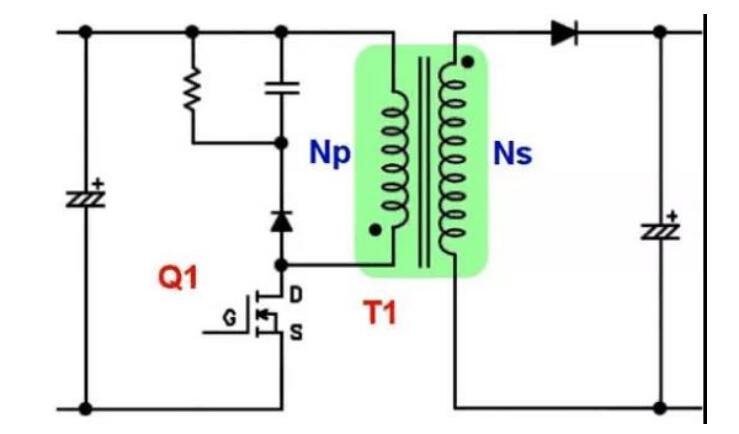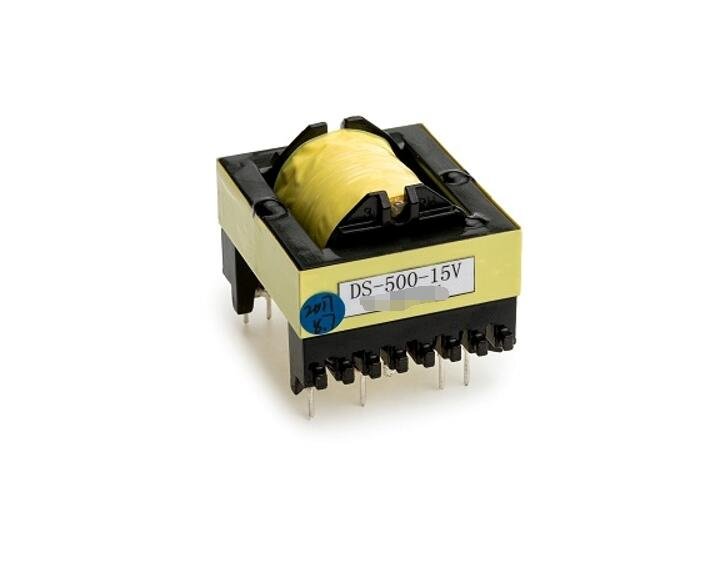What Is the Flyback Transformer?
A transformer works in the flyback circuit, the output and input of the secondary transformer are reversed. The transformer’s magnetic core stores energy during operation, so the magnetic density is higher than other methods, the flyback transformer has a much lower power rating.
How does the Flyback Transformer Works?
In fact, transformers are devices used to change the AC voltage via electromagnetic induction.
In a flyback transformer, when the primary winding is made conductive, the secondary winding is not conductive; At the start of the magnetizing period, during the on period (Ton), the inductor stores energy; In the cut-off period (Toff), energy is released to the load. A flyback transformer typically operates in CCM mode. If the input voltage or load current decrease, the flyback transformer is more easily operated in DCM mode.

The construction of Flyback Transformer
1. Core
Flyback transformers need an iron core as a magnetic circuit.
2. Winding
A flyback transformer is designed with at least two windings (i.e. the rated voltage) that have different common turns.
3. Insulation System
Flyback transformers are required to have a corresponding insulation system due to the potential difference between the winding and ground wire.
4. Copper wire
The copper wire carries the current and is an essential element of the Flyback transformer.
The applications of Flyback Transformer
Flyback transformer is suitable for low-power power supplies and various power adapters.
The applications as follow:
- LED Lighting
- DC-DC power supplies
- Telecom
- Capacitor charging
- Power over Ethernet (PoE)
- Battery charging
- Solar Microinverters
The advantage of flyback transformer
- The circuit is simple and can efficiently provide multiple DC outputs suitable for a variety of output requirements.
- Flyback transformer turns ratio is small.
- Low conversion loss and high conversion efficiency.
- Wide range of output voltages.
- When the input voltage of a flyback transformer fluctuates greatly, it still has relatively stable output voltage.
The disadvantage of flyback transformer
- It has a large ripple in the output voltage. The load adjustment accuracy is not high, and the output power is limited. It is usually used below 150W.
- The flyback transformer must be larger than normal when operating in continuous current (CCM) mode: the large DC component will cause the core to saturate quite easily, so an air gap must be added to the circuit, which will lead to the transformer becoming larger.
- It’s usually necessary to install auxiliary absorption circuits.
The difference between forward transformer and flyback transformer
Comparison Chart
| Comparison Basis | Forward Transformer | Forward Transformer | |
| 1 | Working Principle | The primary is working and the secondary is also working,usually in CCM mode, there is no secondary and there is freewheeling inductive freewheeling. | The primary is working, but the secondary is not working,The primary and secondary are independent,usually in DCM mode |
| 2 | Air Gap | NO need air gap | Need air gap |
| 3 | Multiple output | NO | YES |
| 4 | Output Power | More than 100W | Less 100W |
| 5 | Application | Due to the high power output and high cost, it is often used in high-power power supplies. | The output power is small, its cost is low, and its debugging is relatively easy, so it is often used in low-power power supplies. |



